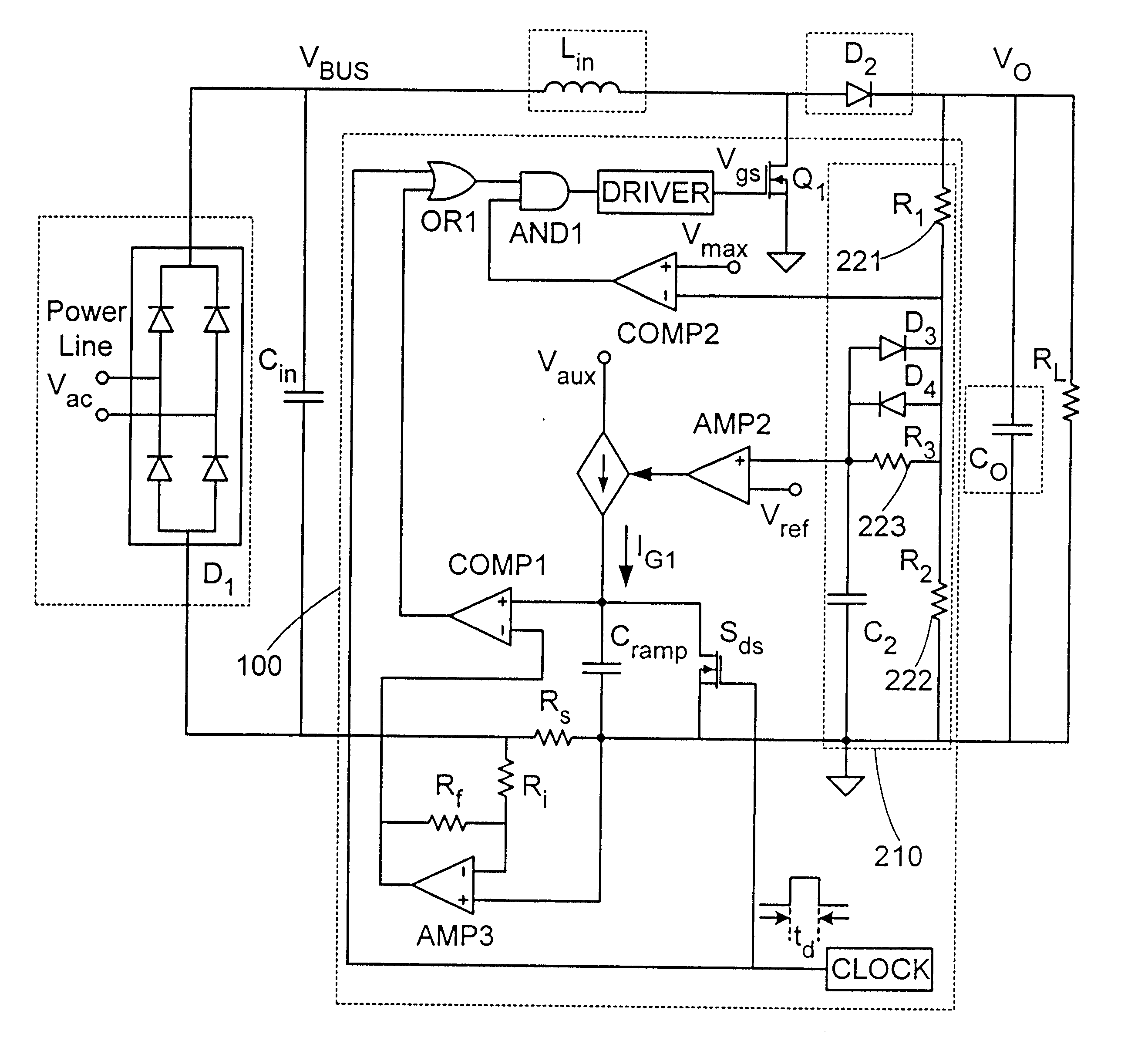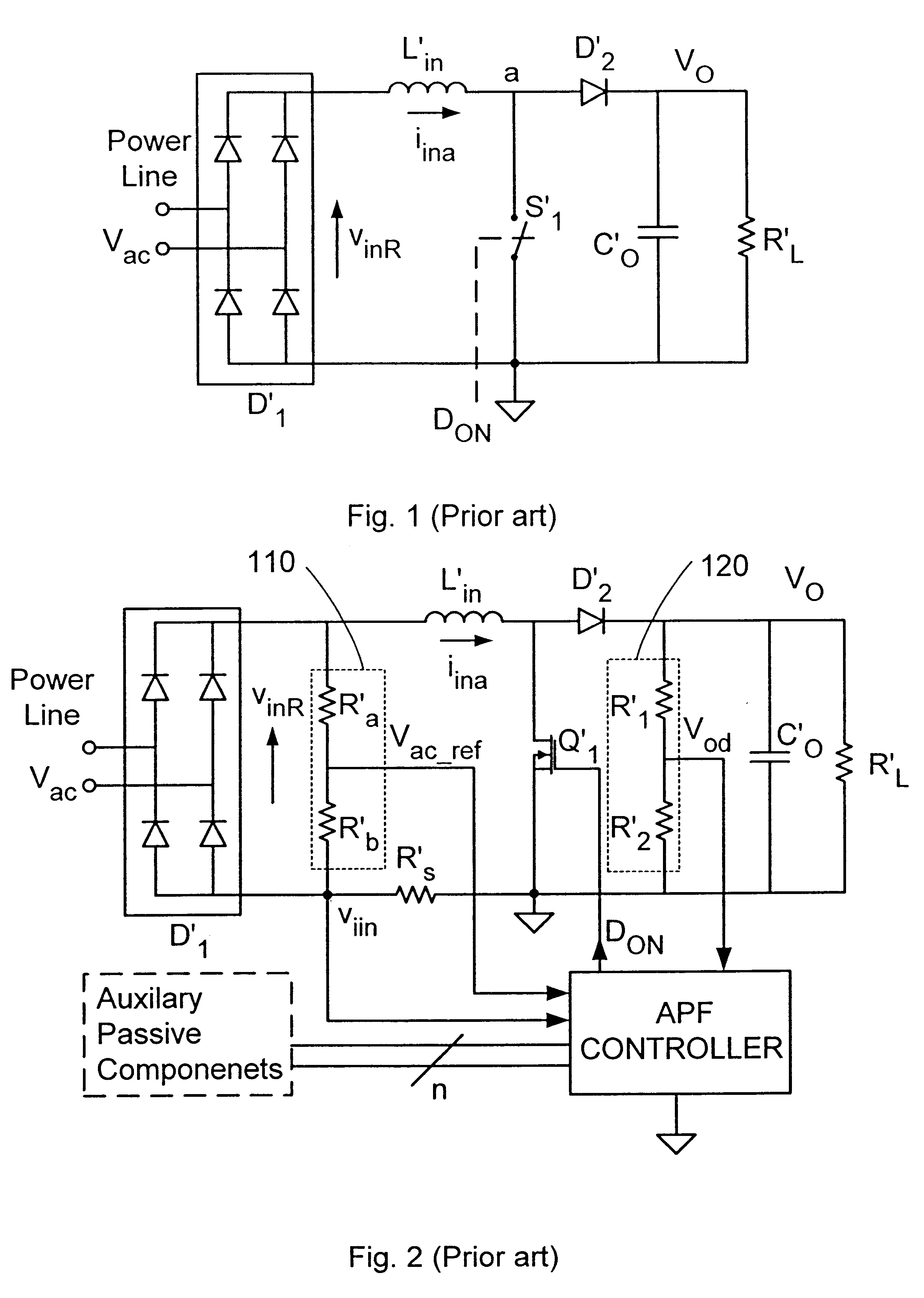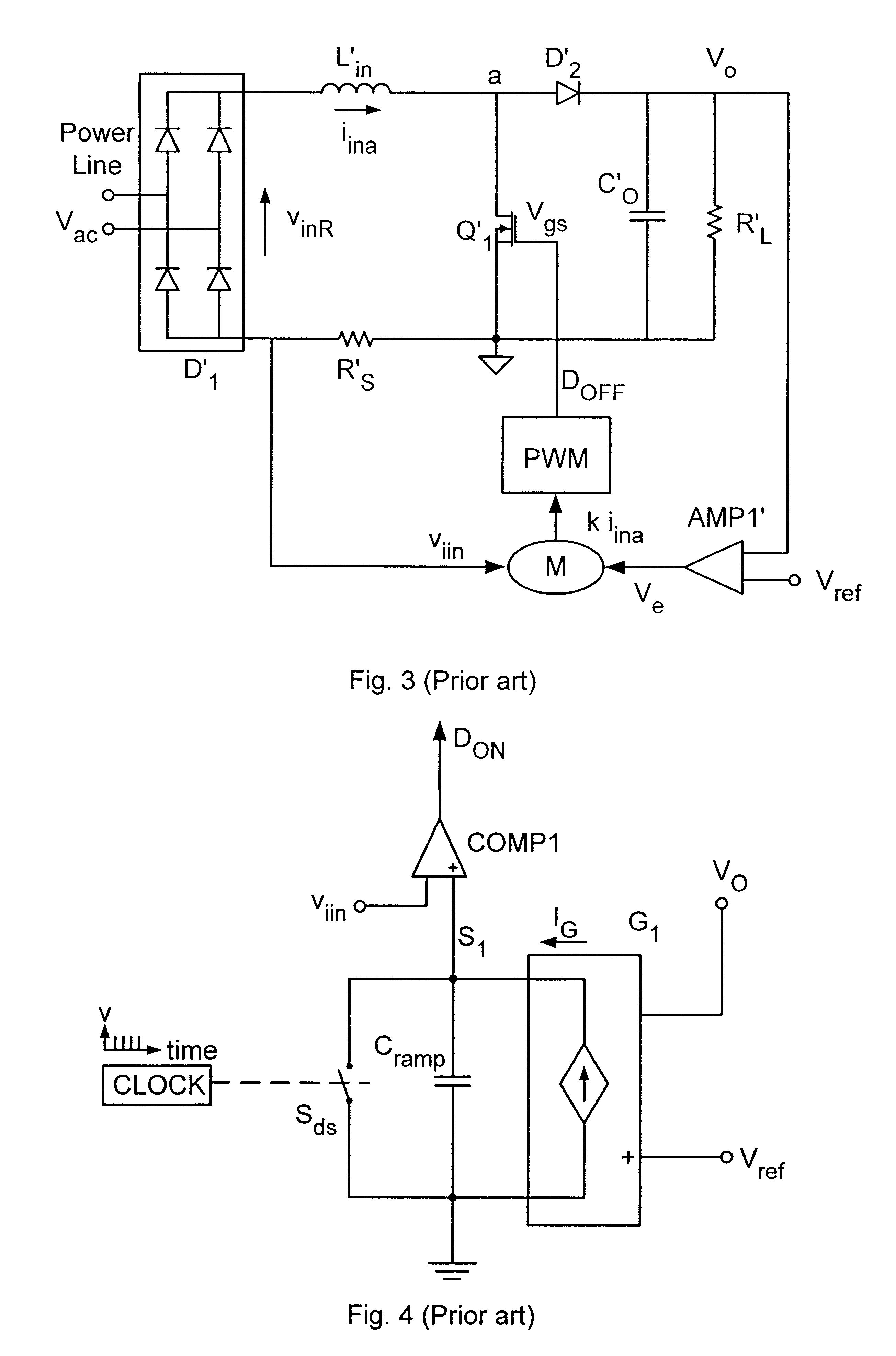Method and apparatus for active power factor correction with minimum input current distortion
a technology of active power factor and input current, which is applied in the direction of electric variable regulation, process and machine control, instruments, etc., can solve the problems of low power transmission efficiency, undesirable line voltage shape distortion, and possible interference with other units connected to the power lin
- Summary
- Abstract
- Description
- Claims
- Application Information
AI Technical Summary
Benefits of technology
Problems solved by technology
Method used
Image
Examples
Embodiment Construction
An example of a preferably practical embodiment of an APFC stage according to this invention is shown in FIG. 19. This circuit diagram consists of a power stage 500 with a snubber, a driver 504, a ramp generator 506, a current amplifier 508, a feedback 510, a D.sub.ON blanking 512 and a PWM logic circuitry 514. Power stage 500 (boost topology) includes a main switch Q.sub.3, and output diode D.sub.10, an input inductor L.sub.in, a current sense resistor R.sub.29, and a snubber circuitry 528 (comprised of diodes D.sub.13 and D.sub.14, a capacitor C.sub.6, and an inductor L.sub.sn). The gate of Q.sub.3 is controlled by a driver 504 that is based on two MOSFET transistors Q.sub.6 and Q.sub.8. The input current of the power stage is sensed by sense resistor R.sub.29, amplified by a current error amplifier U.sub.5B and filtered out by a low pass filter 542 (which includes a resistor R.sub.37 and a capacitor C.sub.13). The offset signal needed to handle the low load situation is implement...
PUM
 Login to View More
Login to View More Abstract
Description
Claims
Application Information
 Login to View More
Login to View More - R&D
- Intellectual Property
- Life Sciences
- Materials
- Tech Scout
- Unparalleled Data Quality
- Higher Quality Content
- 60% Fewer Hallucinations
Browse by: Latest US Patents, China's latest patents, Technical Efficacy Thesaurus, Application Domain, Technology Topic, Popular Technical Reports.
© 2025 PatSnap. All rights reserved.Legal|Privacy policy|Modern Slavery Act Transparency Statement|Sitemap|About US| Contact US: help@patsnap.com



